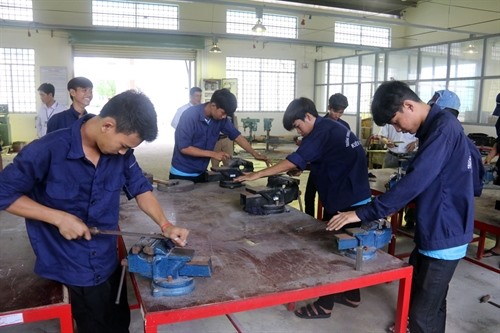 Society
Society

Strengthening co-operation between vocational schools and businesses is key to meeting the demand for high quality labour, according to the Directorate of Vocational Education and Training.
 |
| Students in a mechanics class at Kiên Giang Province Boarding Vocational School. — VNA/VNS Photo Lê Huy Hải |
HÀ NỘI — Strengthening co-operation between vocational schools and businesses is key to meeting the demand for high quality labour, according to the Directorate of Vocational Education and Training.
A survey by the directorate and the Department of Employment under the Ministry of Labour, Invalids and Social Affairs found that about 36.29 per cent of enterprises in Việt Nam offer job training to their employees.
In particular, 54.59 per cent of State-owned enterprises, 30.18 per cent of non-State enterprises and 56.57 per cent of foreign-invested enterprises have job training activities.
By May 2018, there were nearly 2,000 job training institutions in Việt Nam including 394 colleges, 515 vocational schools and 1,045 job-training centres.
Of the country’s colleges, 19.4 per cent were established by businesses. For vocational school and job-training centres, the numbers are 32.5 and 15.9 per cent, respectively
According to the survey, only 9 per cent of enterprises in Việt Nam co-operated with training institutions.
According to the Directorate of Vocational Education and Training, Việt Nam has an increasing demand for labour, especially highly skilled workers for domestic enterprises and international partners.
In order to meet demand, the country’s vocational education and training system must include different levels. High levels can provide highly skilled workers and lower levels can provide general workers.
The directorate has also called for drastic measures that make enterprises key stakeholders in the training system. It hopes to introduce the vocational school model to businesses in Việt Nam.
In the model, firms are both investors and clients of job training institutions.
Enterprises are expected to open vocational schools where skillful workers are trainers; trainees will learn from established workers and the firms’ equipment.
The curriculum would be developed by both schools and enterprises. However, the model will likely struggle to generate positive impacts until enterprises are fully engaged. — VNS




